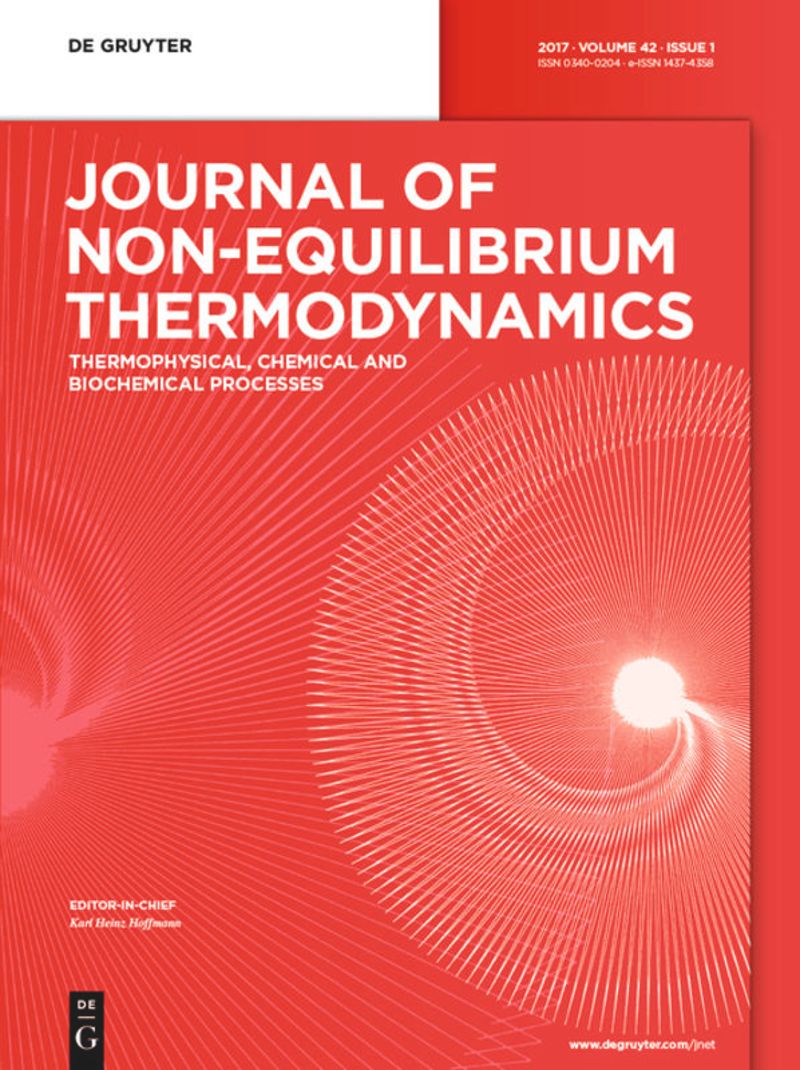扰动硬二聚体链状态方程的密度和等温压缩率:在纳米流体中的应用
IF 4.3
3区 工程技术
Q1 MECHANICS
引用次数: 1
摘要
摘要使用扰动的硬链状态方程(EoS),通过Yukawa尾在273–363 K范围内和高达45 MPa的压力下的吸引项,对几种纳米流体的密度和等温压缩率进行了建模。感兴趣的纳米流体包括TiO2锐钛矿(-A)、TiO2金红石(-R)、SnO2、Co3O4、CuO、ZnO和Al2O3,作为分散在作为基础流体的乙二醇、水、聚乙二醇、乙二醇+水和聚乙二醇+水中的纳米颗粒。EoS能够估计9种纳米流体的1397个密度数据,总平均绝对偏差(AAD)为0.90%。还使用EoS预测了6种选定纳米流体的等温压缩系数,对1095个检测数据点的AAD为5.74%。PHDC-EoS无法准确估计3种选定的EG-、PEG-和水基纳米流体的过量体积,因为与文献数据的相对偏差大于34%,尽管结果相对于纳米颗粒浓度的趋势与文献一致。为了进一步研究密度预测,我们训练了一个具有单个隐藏层和17个神经元的神经网络,该网络能够准确预测纳米流体的密度。本文章由计算机程序翻译,如有差异,请以英文原文为准。
Densities and isothermal compressibilities from perturbed hard-dimer-chain equation of state: application to nanofluids
Abstract Densities and isothermal compressibilities of several nanofluids were modelled using a perturbed hard-chain equation of state (EoS) by an attractive term from Yukawa tail in 273–363 K range and pressure up to 45 MPa. The nanofluids of interest comprise TiO2-Anatase (-A), TiO2-Rutile (-R), SnO2, Co3O4, CuO, ZnO, and Al2O3 as nanoparticles dispersed in ethylene glycol, water, poly ethylene glycol, ethylene glycol + water, and poly ethylene glycol + water as base fluids. The EoS was capable of estimating 1397 density data of 9 nanofluids with the overall average absolute deviations (AAD) of 0.90%. The coefficients of isothermal compressibility of 6 selected nanofluids were also predicted using the EoS with the AAD of 5.74% for 1095 data points examined. The PHDC EoS was not capable of estimating the excess volumes of 3 selected EG-, PEG-, and water-based nanofluids accurately as the relative deviations from the literature data were greater than 34%, even though the trend of results against the nanoparticle concentration was in accord with the literature. To further investigate the density prediction, we have trained a neural network with a single hidden layer and 17 neurons which was able to predict the densities of nanofluids accurately.
求助全文
通过发布文献求助,成功后即可免费获取论文全文。
去求助
来源期刊
CiteScore
9.10
自引率
18.20%
发文量
31
审稿时长
1 months
期刊介绍:
The Journal of Non-Equilibrium Thermodynamics serves as an international publication organ for new ideas, insights and results on non-equilibrium phenomena in science, engineering and related natural systems. The central aim of the journal is to provide a bridge between science and engineering and to promote scientific exchange on a) newly observed non-equilibrium phenomena, b) analytic or numeric modeling for their interpretation, c) vanguard methods to describe non-equilibrium phenomena.
Contributions should – among others – present novel approaches to analyzing, modeling and optimizing processes of engineering relevance such as transport processes of mass, momentum and energy, separation of fluid phases, reproduction of living cells, or energy conversion. The journal is particularly interested in contributions which add to the basic understanding of non-equilibrium phenomena in science and engineering, with systems of interest ranging from the macro- to the nano-level.
The Journal of Non-Equilibrium Thermodynamics has recently expanded its scope to place new emphasis on theoretical and experimental investigations of non-equilibrium phenomena in thermophysical, chemical, biochemical and abstract model systems of engineering relevance. We are therefore pleased to invite submissions which present newly observed non-equilibrium phenomena, analytic or fuzzy models for their interpretation, or new methods for their description.

 求助内容:
求助内容: 应助结果提醒方式:
应助结果提醒方式:


